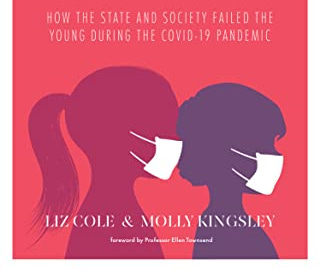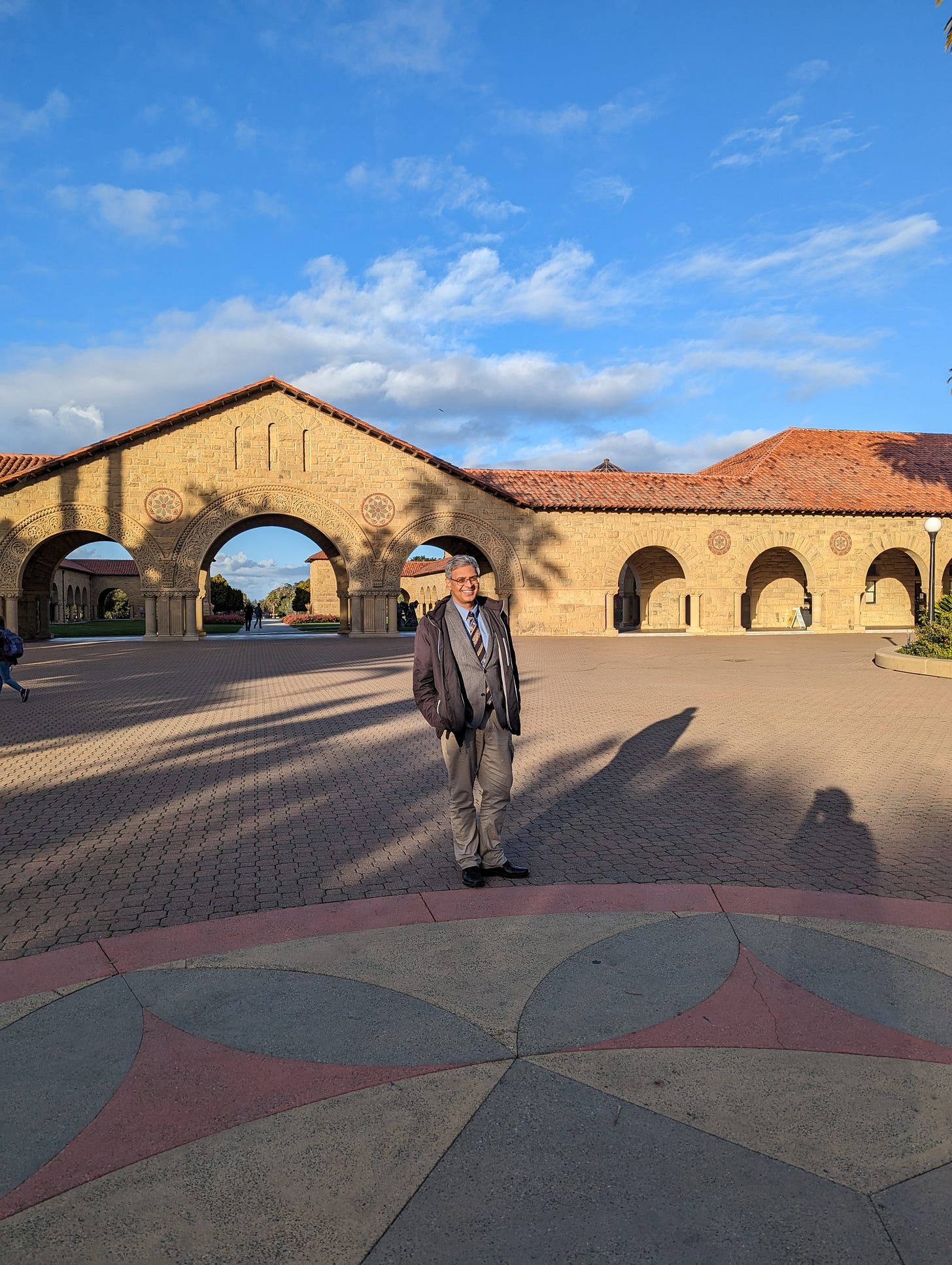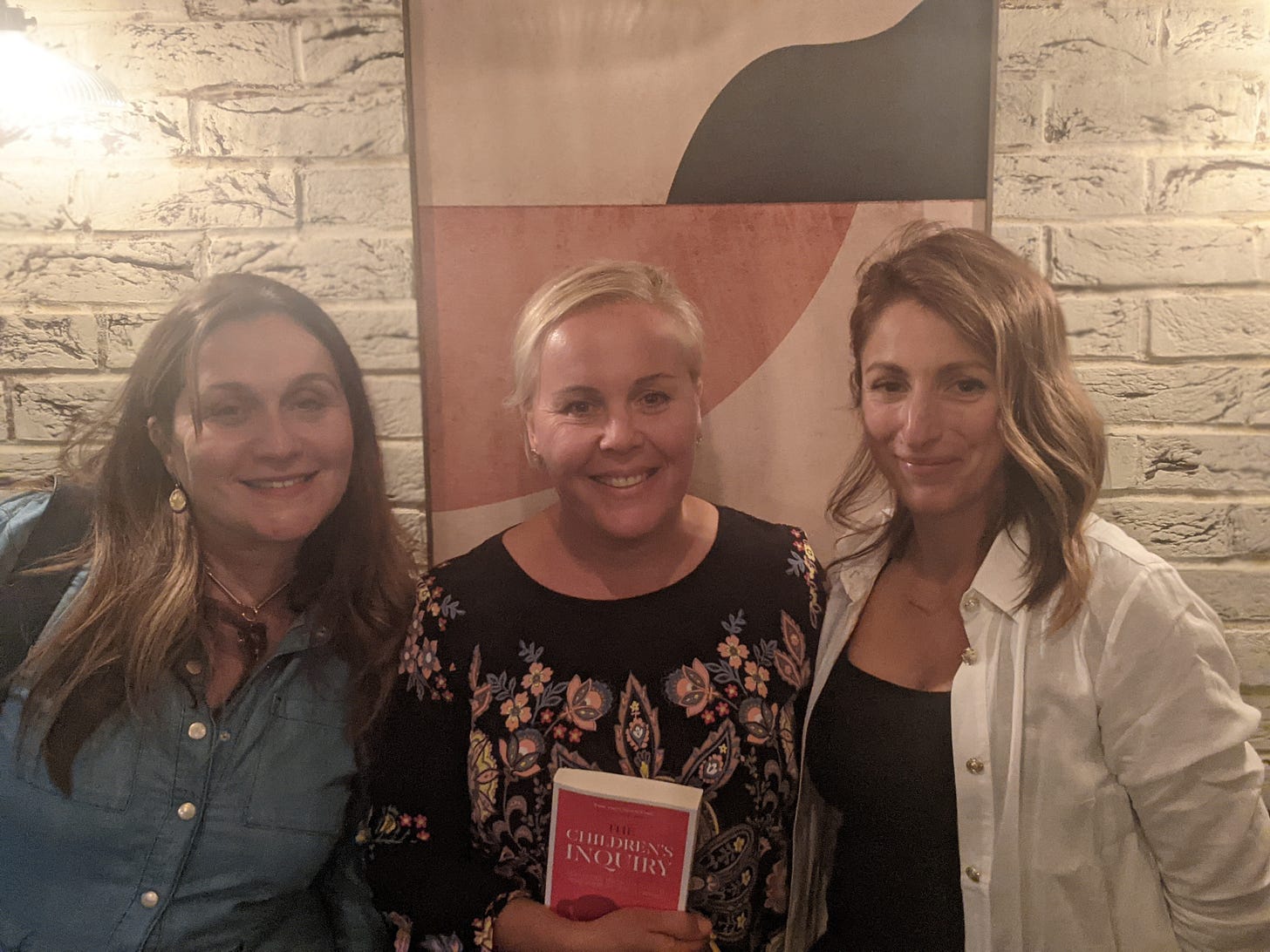"THE CHILDREN'S INQUIRY" by Liz Cole & Molly Kingsley
How the State and Society Failed the Young during the Pandemic
Yesterday marked the official beginning of the great reckoning in the U.S. with a long overdue House Committee Hearing on “The Federal Response to COVID-19.” As testimony came in, we learned how it was that our children became political pawns – sacrificed by politicians and bureaucrats desperate to appear effective, while they struggled with their own astounding incompetence.


In the UK, the reckoning is already well underway. Restore Childhood is honored to share excerpts from the book our UsForThem friends Liz Cole and Molly Kingsley published last summer “THE CHILDREN’S INQUIRY: How the State and Society Failed the Young during the Covid-19 Pandemic.”
UsForThem is a parent group that was formed in the UK in May 2020, to advocate against school closures.
In this excerpt we hear from Stanford School of Medicine Professor Dr. Jay Bhattacharya, co-author of The Great Barrington Declaration, and founding member of the newly formed Norfolk Group, a team of scientists leading the way to demand accountability, so that this never happens again.
CHAPTER 8: PLAYING POLITICS WITH CHILDREN’S LIVES
Red/Blue divides and Trump-mania
The political tug of war and inversion of left/right priorities has been reflected even more starkly in the US than in the UK. The political situation in many US states concerning schools and school closures has been extreme. It is a ‘fair is foul’ and ‘foul is fair’ world where masking toddlers and closing schools for almost 18 months is the ‘virtuous’ position. While we have our impressions as outsiders, we have turned to US parents for their insights and experiences of speaking up as #openschools campaigners.
As in the UK, support for school closures, lockdowns and extended restrictions such as masking came primarily from the left and ‘blue states’ such as California, while a drive to open schools and oppose restrictions was seen most in ‘red states’ like Florida and Texas.
The situation around schools in the US was particularly febrile for two reasons: Donald Trump, and election year.
In summer 2020, Trump began calling for schools to reopen, writing in characteristic all-caps on Twitter that ‘SCHOOLS MUST OPEN IN FALL.’ His support of open schools had one disastrous outcome for children – it entrenched opposition to reopening among Democrats. As in the UK, teaching unions shared this stance, and Trump was criticised for his recklessness and prioritising the economy over lives.
The headlines at the time from UK and US publications speak volumes:
“Reckless, callous, cruel’: teachers’ chief denounces Trump plan to reopen schools” Guardian
“Donald Trump’s mind-bending logic on school reopenings” CNN
“Trump wants to reopen schools. Hint: It’s not just about education.” Politico
Whatever Trump’s motivations, the response was telling. To what extent did Democrats’ inability to engage with the incumbent administration on this single issue deepen the school closure crisis and extend it beyond reasonableness?
As parent Jessica Hockett, told us: ‘So much in 2020 was caught up with Donald Trump... and that it was a presidential election year, there was so much anti-Trump vitriol built upon, on one side it was always political here.’
Democrat states and Republican states were polarised in terms of the scope of school closures, their length, and then the nature of restrictions in schools. Even more than in the UK, where closures applied in the independent and state sectors alike, a gulf opened up regarding access to in-person schooling between public and private schools
Dr. Jay Bhattacharya documented this division:
‘In the US there’s really been a big divide between Democrat- led states and red states in how we’ve treated children through the pandemic. I think almost all of the US shut down schools for some time including just remote learning. But even from early in the pandemic, what happened was there was this rich/poor divide. So public schools were shut down preferentially early in the pandemic and especially in poorer areas, there’s no way to substitute... Then as the pandemic wore on many of the ‘red’ states opened their schools like Florida, for instance, kept at schools 100% open over the objections of teachers’ unions who sued the Governor over that decision to open. Whereas where I live in California, the public schools were closed more or less continuously for 18 months.’
This divergence can be attributed not only to Trump-related tensions, but also to the close links between the response in Democrat states and the strength of teaching unions. A study from 2020 documented the correlation between stronger teaching unions and longer closures, and Jennifer Sey, a campaigner and writer, corroborates this from her own experience in California – a hub of heightened restrictions:
‘The more uniform politically a particular geography is, and the deeper blue it is, generally speaking, the more power the teachers unions have in those places. And that also drives it... because the teachers’ unions have so much power and influence. And my issue from the beginning was teachers’ unions are there to protect teachers and fight for teachers. Who’s fighting for the kids though?
That’s not the union job so in a sense, I guess I can forgive them. But in San Francisco in particular, the Board of Education is supposed to fight for the kids, and they fail to do that. There’s no daylight between the Board of Education and the teachers’ unions, and so there’s no one, but parents like us that are fighting for the kids.’
The effect of this politicking has been to vastly widen existing inequalities in the US through lengthy school closures. Even though schools are now open, in May 2022, some US cities, like New York, have continued with measures such as masking for two-year-olds in daycare while releasing restrictions for all other groups – UK paediatricians and parents have looked on aghast.
Below are some reviews of “The Children’s Inquiry”- you can buy your copy here.
“The Children’s Inquiry is a detailed account of societal failure during the pandemic. That failure is already being forgotten or its history is being deliberately rewritten. That failure by the state, the civil service, political parties, the health service, schools, the teacher unions and many individual teachers, was a failure to protect, care for and educate our children. We must never forget. By reading this book you can refresh your memory and join the authors in a detailed discussion of how we can ensure such neglect is never repeated. We can have this discussion because one good thing that came out of the pandemic was UsForThem, founded by the authors. It is a new form of spontaneous nation-wide organisation that will help us defend our children now and in the future.”
Dennis Hayes, Emeritus Professor of Education, the University of Derby
“During Covid, the state and society put adults first but let children down badly. As teenage contributors say, they were treated ‘like criminals’ and the environment they faced was ‘horrible, tense, smothering’. Yet the first draft of the terms of reference of the official inquiry failed to mention the word ‘children’ once.
This book combines expert witnesses, vivid personal testimony from parents and children and the commentary of Cole and Kingsley, who campaigned for children’s rights throughout the pandemic. It’s an important compendium of the collateral damage that was inflicted upon children. At times it is a painful read, but it’s necessary and galvanising. It thoroughly dissects the impact of the Covid response on children, but it asks much deeper questions. As a society, can we say we truly cared about children? And is now the time to imagine a better vision for childhood?
Brave, urgent and fierce, this book is a vital counterpoint to the official inquiry.”
Laura Dodsworth, author of A State of Fear







